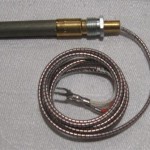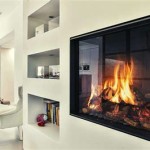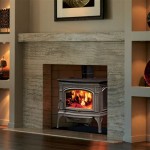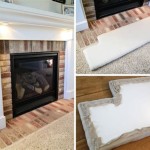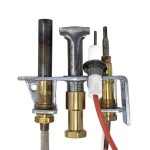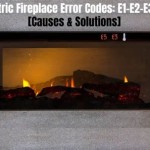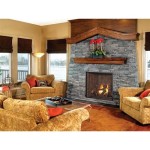Gas Fireplace Mantel Ideas: Enhancing Your Home's Focal Point
A gas fireplace serves as a significant focal point in many homes, offering both warmth and aesthetic appeal. The mantel, positioned above or surrounding the firebox, plays a crucial role in defining the fireplace’s style and overall integration with the room's décor. Selecting the right mantel design and material is essential for achieving a cohesive and visually appealing result. This article explores various gas fireplace mantel ideas, examining materials, styles, and design considerations to aid in informed decision-making.
Material Selection for Gas Fireplace Mantels
The choice of material for a gas fireplace mantel impacts not only its appearance but also its durability and compatibility with the fireplace itself. Several materials are commonly used, each possessing distinct characteristics.
Wood: Wood is a classic and versatile choice for fireplace mantels. Its natural warmth and adaptability to various styles make it a popular option. Hardwoods like oak, maple, and cherry are prized for their durability and aesthetic appeal. Softwoods, such as pine, are more budget-friendly but may require more maintenance. The finish applied to the wood significantly influences its appearance, ranging from natural stains that highlight the wood grain to painted finishes that offer a clean and modern look. It is crucial to ensure that the wood mantel is properly installed, maintaining a safe distance from the firebox to prevent overheating or potential fire hazards. The National Fire Protection Association (NFPA) provides guidelines on safe clearances for combustible materials near fireplaces.
Stone: Stone mantels offer a sense of grandeur and permanence, suitable for both traditional and contemporary settings. Natural stone options include granite, marble, limestone, and slate. Each stone type exhibits unique patterns and color variations, adding character to the fireplace. Granite is renowned for its durability and resistance to heat, while marble offers a luxurious and elegant aesthetic. Limestone provides a softer, more rustic appearance, and slate presents a sleek and modern choice. Manufactured stone, also known as faux stone, is a cost-effective alternative to natural stone. It replicates the look and texture of natural stone while being lighter in weight and easier to install. Proper sealing is essential for stone mantels to protect against staining and damage from soot or moisture.
Concrete: Concrete mantels have gained popularity in recent years, particularly in contemporary and industrial-inspired designs. Concrete can be molded into various shapes and sizes, offering a high degree of design flexibility. It can be left in its natural gray tone or stained to achieve different colors and finishes. Concrete is a durable and heat-resistant material, making it a suitable choice for gas fireplaces. However, it is important to ensure that the concrete is properly sealed to prevent cracking and staining. The weight of concrete mantels can also be a consideration during installation, requiring adequate structural support.
Metal: Metal mantels offer a sleek and modern aesthetic, often used in minimalist and industrial designs. Common metal options include steel, stainless steel, and wrought iron. Steel mantels can be powder-coated in various colors, providing a durable and low-maintenance finish. Stainless steel offers a corrosion-resistant and contemporary look. Wrought iron mantels are often intricately designed, adding a touch of elegance and sophistication. Metal mantels conduct heat efficiently, so it is crucial to ensure that they are properly insulated or positioned at a safe distance from the firebox to prevent burns.
Exploring Various Mantel Styles
The architectural style of a home and personal preferences play a significant role in determining the most suitable mantel style. A mantel should complement the existing décor and enhance the overall aesthetic of the room.
Traditional Mantels: Traditional mantels often feature ornate detailing, intricate carvings, and classic architectural elements. They are typically made from wood or stone and are designed to create a sense of formality and elegance. Common features include fluted columns, dentil molding, and decorative brackets. Traditional mantels are well-suited for homes with a classic or Victorian design aesthetic. They can be paired with traditional fireplace surrounds and accessories to create a cohesive and timeless look.
Modern Mantels: Modern mantels are characterized by clean lines, minimalist designs, and a focus on functionality. They often feature simple geometric shapes and are made from materials such as concrete, metal, or glass. Modern mantels are designed to create a sense of openness and airiness, complementing contemporary homes with a minimalist aesthetic. They can be paired with sleek fireplace surrounds and accessories to create a sophisticated and understated look.
Rustic Mantels: Rustic mantels evoke a sense of warmth, charm, and connection to nature. They often feature rough-hewn wood, natural stone, or reclaimed materials. Rustic mantels are designed to create a cozy and inviting atmosphere, complementing homes with a country or farmhouse aesthetic. Common features include exposed wood grain, knots, and imperfections. Rustic mantels can be paired with natural stone fireplace surrounds and accessories to create a comfortable and inviting space.
Floating Mantels: Floating mantels create a visually striking effect, appearing to hover above the fireplace. They are typically made from wood, concrete, or metal and are supported by hidden brackets or mounting systems. Floating mantels offer a clean and minimalist look, ideal for modern and contemporary homes. They can be customized to various lengths and depths, providing flexibility in design. Proper installation is crucial to ensure the stability and safety of a floating mantel.
Shelf Mantels: Shelf mantels provide a simple and functional solution for adding a decorative element above the fireplace. They consist of a single shelf mounted to the wall, offering a display area for artwork, photographs, and other decorative items. Shelf mantels can be made from various materials, including wood, stone, or metal. They are versatile and can be adapted to various styles, from traditional to modern. Shelf mantels are a cost-effective option for enhancing the fireplace without requiring extensive construction.
Design Considerations for Gas Fireplace Mantels
Several design considerations should be taken into account when selecting a gas fireplace mantel to ensure optimal aesthetics, functionality, and safety.
Size and Proportion: The size and proportion of the mantel should be appropriate for the size of the fireplace and the room. A mantel that is too large can overwhelm the space, while a mantel that is too small can appear insignificant. The width of the mantel should typically extend beyond the width of the fireplace surround, creating a balanced and visually appealing look. The height of the mantel should also be considered, ensuring that it is comfortable to view and does not obstruct the view of the fire.
Fire Safety: Fire safety is a paramount consideration when designing and installing a gas fireplace mantel. It is crucial to adhere to the guidelines and regulations set forth by the National Fire Protection Association (NFPA) and local building codes. These guidelines specify the minimum clearances required between combustible materials and the firebox. Maintaining adequate clearance is essential to prevent overheating and potential fire hazards. Non-combustible materials, such as stone, concrete, and metal, offer greater fire resistance and can be positioned closer to the firebox. Wood mantels should be treated with fire-retardant coatings to enhance their fire resistance.
Integration with Existing Décor: The mantel should seamlessly integrate with the existing décor of the room, complementing the color palette, furniture style, and architectural details. Consider the overall style of the room when selecting the mantel material, finish, and design. A traditional mantel may be more appropriate for a classically styled home, while a modern mantel may be better suited for a contemporary space. The mantel should enhance the overall aesthetic of the room, creating a cohesive and harmonious look.
Storage and Functionality: While the primary purpose of a mantel is decorative, it can also serve a functional role by providing storage or display space. Consider incorporating shelving or cabinets into the mantel design to create additional storage for firewood, media equipment, or decorative items. A mantel with a deep shelf can provide ample space for displaying artwork, photographs, and other cherished possessions. The functionality of the mantel should be carefully considered to ensure that it meets the needs of the homeowner.
Professional Installation: Proper installation is crucial for ensuring the safety and longevity of a gas fireplace mantel. It is recommended to hire a qualified professional to install the mantel, particularly if it involves complex construction or modifications to the fireplace surround. A professional installer will have the expertise and experience to ensure that the mantel is installed correctly, adhering to all applicable safety standards and building codes. Incorrect installation can lead to safety hazards, such as overheating or structural instability.
Ventilation: Proper ventilation is essential for the safe and efficient operation of a gas fireplace. The mantel design should not obstruct the fireplace’s ventilation system, which is responsible for exhausting combustion gases. Ensure that there is adequate clearance around the vents and that the mantel does not impede airflow. Consult with a qualified professional to ensure that the mantel design meets the ventilation requirements of the fireplace.
Ultimately, selecting the right gas fireplace mantel is a multifaceted process that involves considering various factors, including material, style, design, and safety. By carefully evaluating these elements, homeowners can create a fireplace that serves as a stunning focal point, enhancing the warmth, beauty, and value of their homes.

7 Fireplace Surround Ideas That Will Ignite The Room

40 Fabulous Fireplace Design Ideas For Any Budget Or Style

10 Fireplace Mantel Decorating Ideas Full Service Chimney

Types Of Fireplaces And Mantels The Home Depot

19 Amazing Diy Fireplace Mantel Ideas To Inspire You

7 Contemporary Fireplace Mantel Design Ideas For Interior Designers

Fireplace Surround Ideas For Every Type Of

5 Fireplace Mantel Decorating Ideas For Your Traditional Hearth

Fireplace Surround Design Ideas
.aspx?strip=all)
2024 Gas Fireplace Trends Design Regency
Related Posts


